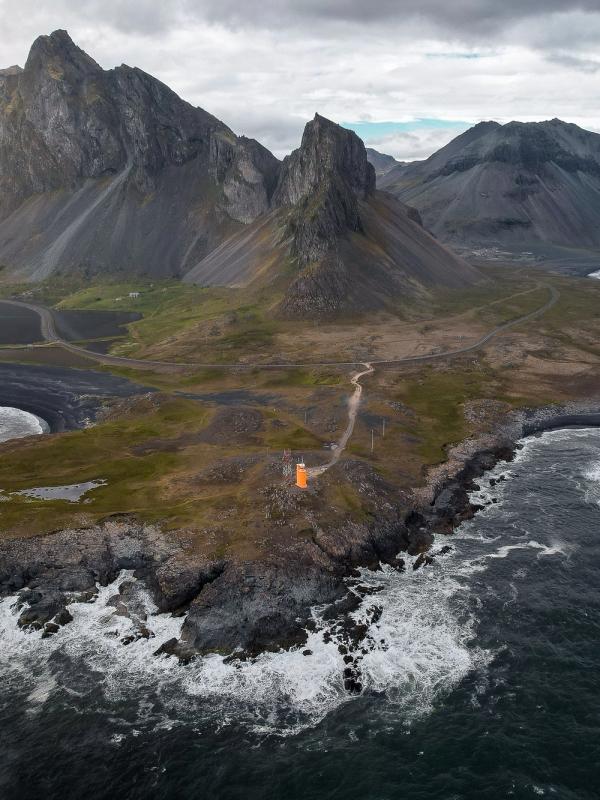
Exploring southeast Iceland: Hvalnes Nature Reserve
Imagine you’re traveling across Iceland in your campervan, stopping at the places you want to see the most, and doing it at your own pace. The number of famous natural landmarks in this country is almost endless, and there’s a bit for everyone. But having your own vehicle allows you to go a bit further and explore the lesser-known gems that many people overlook in their visit but that are completely worth the trip. If you’re looking for one of those off-the-radar places, then you must go to Hvalnes Nature Reserve, a great spot in southeast Iceland.
It isn’t swarming with tourists, which makes it feel like your own little secret. It’s also really close to the Ring Road and many places where you can park your camper for the night, so it’s a great stop to add to your itinerary.
Key Takeaways
- Hvalnes is a small nature reserve in the southeastern tip of Iceland.
- It features a beautiful black pebble beach and a picturesque lighthouse.
- It’s a great place for birdwatching.
What’s Hvalnes Nature Reserve?
Among the astonishing natural monuments we can find in Iceland, some are not as popular as others. If you’re looking for those hidden gems that many travelers skip on their trip, we’ve got what you’re looking for. Hvalnes Nature Reserve is Iceland in its rawest, most unspoiled form. It’s not loud or crowded, but its pure, rugged beauty is worth the trip to the southeasternmost tip of the island.
The star here is the black rock beach, a stretch of smooth, dark pebbles that crunch satisfyingly under your boots. These stones are of volcanic origin, formed centuries ago when lava flowed down and met the cold waters of the North Atlantic Ocean. The back of the beach is framed by beautiful cliffs, making you feel small in the middle of these natural wonders.
Then there’s the Hvalnes Lighthouse, a bright orange beacon standing in front of the sea. It’s not a huge building, but it has a special charm. The lighthouse is also an excellent place for wildlife lovers. Many seabirds, such as gulls and kittiwakes, can be seen in the area. Even the iconic puffin, with summer being the best time to see them. Hvalnes is wild, quiet, and everything an Icelandic escape should be.
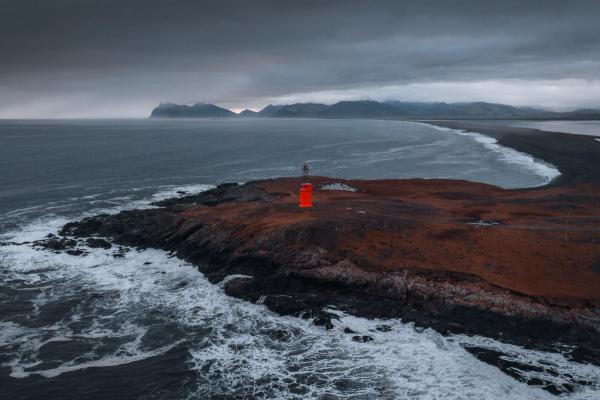
Where’s Hvalnes Nature Reserve and How to Get There
As we have already mentioned, Hvalnes Nature Reserve sits on Iceland’s southeastern coast, about 500 kilometers (310 miles) from Reykjavik. It’s a long distance from the capital, but it is a great stop to make in your campervan itinerary through the country. One of the perks is that Hvalnes Nature Reserve is just off the Ring Road (Route 1), Iceland’s main highway.
If you’re coming from Reykjavik, you just have to take the Ring Road eastbound for 6 or 7 hours until you reach Hvalnes. It sounds a lot, but there are many magnificent places to stop along the way, such as Seljalandsfoss or Skógafoss waterfalls or Jökulsárlón Glacier Lagoon. My recommendation is to do this in 2-3 days.
There are also a few nice towns on the road where you can stop to refuel or to eat. Cool little towns like Hella and Vik. The main city in southeast Iceland is Höfn, a place known for its seafood, especially lobster. 50 kilometers (31 miles) after you’ve passed the town, you’ll see a sign on the right-hand side pointing to Hvalnes. It’s a short dirt road off the highway that leads to a parking area.
Where to Stay Near Hvalnes Nature Reserve
Traveling with your own campervan gives an incredible feeling of freedom. Iceland is a fantastic destination for that, as there are many places to park your vehicle and spend the night. But it’s essential to remember that Iceland has rules about wild camping, so stick to designated spots. Luckily, there are a few not far from Hvalnes.
Höfn Camping Ground
Distance: 50 kilometers (31 miles) from Hvalnes
Höfn is the main town in southeast Iceland, and it has its own camping site. It has everything a campervan traveler needs: electrical outlets, hot showers, toilets, and a shared kitchen. It’s also quite close to the town’s center, and Höfn is famous for its fresh seafood, especially lobster, so you can also enjoy one of the local restaurants. It’s a great base if you want to mix Hvalnes with trips to Vatnajökull Glacier or a puffin tour. It can get quite busy in the summer, so arrive early. Prices start at 2000 ISK ($15 or €14).
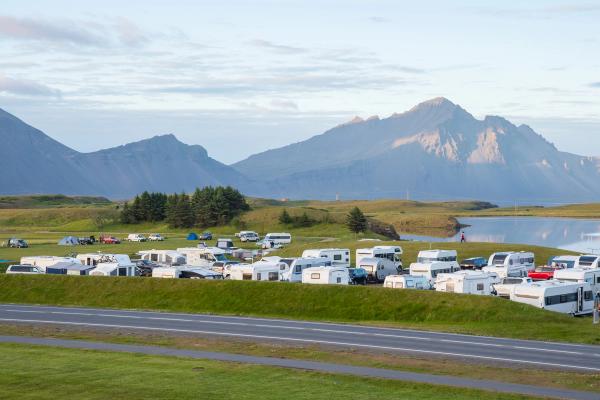
Tjaldsvæðið Myllulækur
Distance: 54 kilometers (33 miles) from Hvalnes
Tjaldsvæðið Myllulækur is just off the Ring Road, a couple of miles north of Höfn. It’s in the middle of a green prairie and features a wooden cabin that can be rented and several spots for vans. It’s also 2000 ISK per person, plus a 300 ISK lodging tax.
Haukafell Campground
Distance: 72 kilometers (44 miles) from Hvalnes
This place is perfect for those who are looking for a quiet but stunning place. It’s on the shore of a beautiful river, and there’s a great hiking trail that starts just at the camping area. It has toilets and showers and also tents available for rent. If you’re after solitude and nature, this is your spot. The price for adults is 1500 ISK ($11 or €10.5) plus 400 ISK of lodging tax.
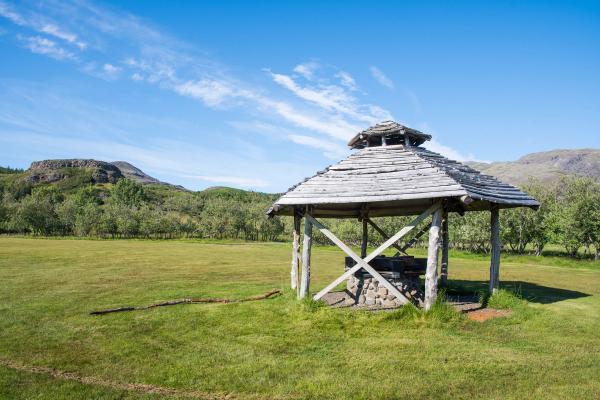
Stafafell Camp Site
Distance: 17 kilometers (10.5 miles) from Hvalnes
This is the closest one to Hvalnes. It’s an old farmhouse with rooms, some with shared bathrooms and some with a private one. It also has several cottages that can be rented. Adults pay 2000 ISK, with a 333 ISK lodging tax per night per tent.
Fossárdalur Campsite
Distance: 69 kilometers (43 miles) from Hvalnes
A fantastic camping site north of Hvalnes, close to a river and a small but charming waterfall. There are several hiking trails in the area. The facilities are pretty good, with toilets, showers, and a kitchen. It also has a washing machine and a dryer. It’s quite big, so there’s no need to book in advance, but it’s better to check if you’re coming in the summer. It costs 2000 ISK, and it’s 1000 ISK per day if you want electricity for your camper.
Djúpivogur Campground
Distance: 54 kilometers (33.5 miles) from Hvalnes
Right in the heart of Djúpivogur, a cute fishing village, this campsite has everything: electricity, showers, and laundry. You can walk to local cafes or check out the picturesque Eggin í Gleðivík egg sculptures by the harbor. It’s close to Hvalnes and perfect if you want something closer to shops and restaurants. Adults (above 14) pay 2100 ISK plus a 333 ISK lodging tax, and the third night is free!
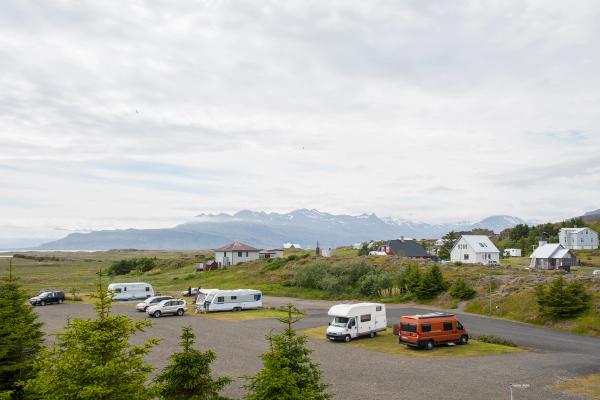
The Weather at Hvalnes Nature Reserve
The weather in Iceland is like a rollercoaster: it goes up and down and can be quite unpredictable. The location of Hvalnes Nature Reserve, on the coast, adds a layer of variability. It’s normal to have wind, and rain can appear all of a sudden. The temperatures in the summer move between 10 and 15°C (50-59°F), but the wind can make it feel colder. In winter, the temperature hovers around freezing point, and snow covers the landscapes.
Check always the local the forecast to see what’s expected.
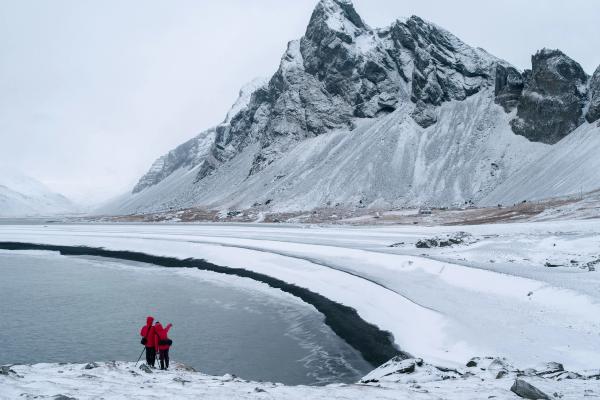
What to Wear at Hvalnes Nature Reserve
When you're getting ready to visit the Hvalnes Nature Reserve in Iceland, packing the right clothes is super important to keep you comfy and safe. As we just mentioned, the weather changes a lot, and it’s important to be able to adapt to these changes.
- Base Layer: Start with a moisture-wicking shirt. A thermal synthetic fabric can be a good idea. This will keep you warm but also dry, which is key to staying warm.
- Mid Layer: A nice and cozy fleece or wool sweater. This is your insulation layer: it maintains heat and keeps you warm when the temperature drops.
- Outer Layer: You’ll definitely need a waterproof and windproof jacket. The wind at Hvalnes can be strong and rain is pretty common, so this layer is your shield against the elements. A pair of waterproof pants are not strictly necessary, but they can be a great ally.
- Footwear: Go for waterproof hiking boots with good grip and proper ankle support. The trails and beach can get slippery and the terrain can be uneven.
- Accessories: Pack a hat and gloves regardless of the season, as the wind chill can be strong. If you’re visiting in winter, bring a thicker coat.
- Bonus Tip: Even if it might sound odd, bring a swimsuit. Not for Hvalnes Beach, but there are many hot springs and geothermal spas all over Iceland and that’s an experience you definitely want to have in this country.
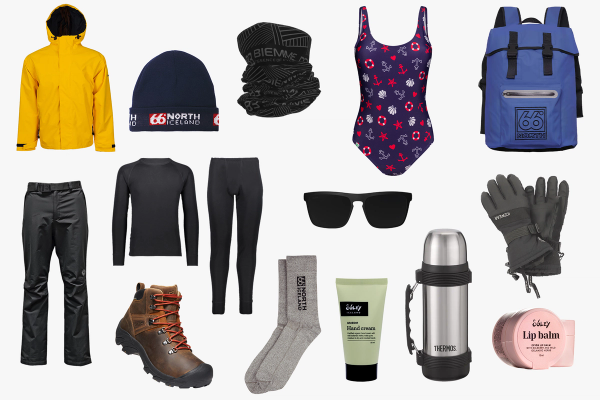
What to See and Do Near Hvalnes Nature Reserve
Hvalnes' location allows for more exploring around the area, which is not short of cool sights.
Take a walk on the black beach
The black rock beach at Hvalnes is not only visually striking but also a place of geological importance. It’s made of smooth volcanic pebbles, showing the volcanic force that has taken part in shaping Iceland. Walking close to the shore in this place is fantastic.
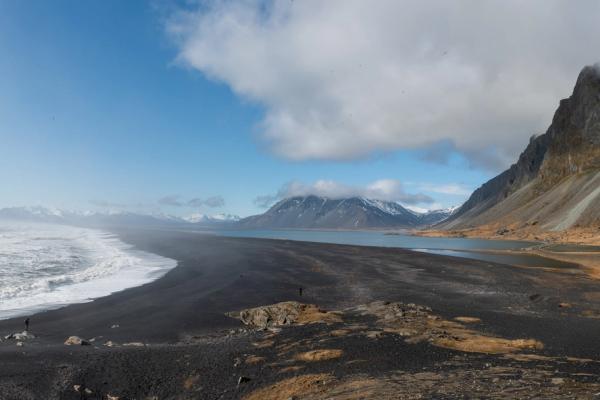
Hvalnes Lighthouse
The Hvalnes Lighthouse is impossible to miss: its bright orange color will surely catch your eye. It’s an important navigational reference in this part of the Atlantic, located on a rocky promontory overlooking the cliffs: It’s a sensational place for photography, with sweeping views of the sea and the mountains in the back. Early morning and sunset will give you the best lightning conditions.
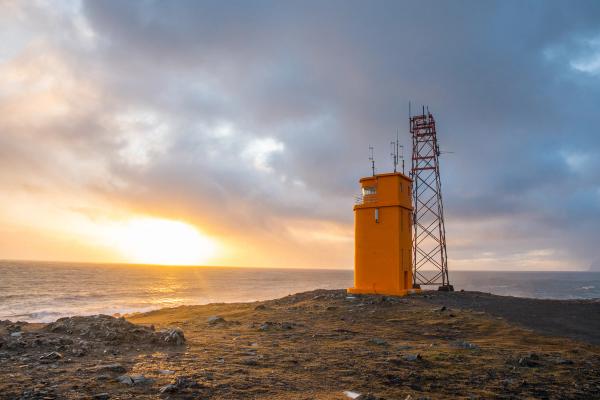
Birdwatching
This area in southeast Iceland is a prime location for bird lovers, especially during the spring and summer. The reserve is a nesting and feeding place for many species, such as Arctic terns, black-legged kittiwakes, and fulmars. However, the most sought-after animal is the puffin. This is true not only here but also in Iceland in general. They come to this area between late April and August to nest along the cliffs.
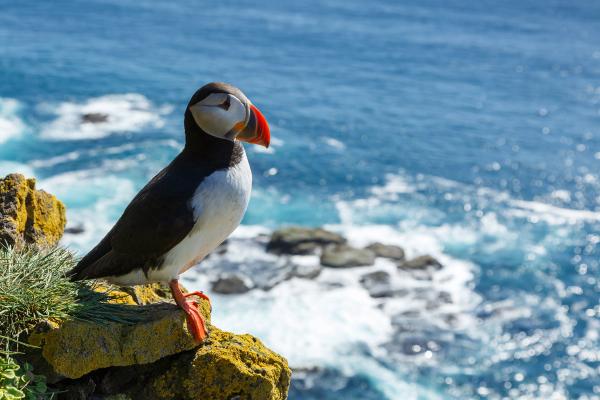
Eystrahorn Mountain
Eystrahorn is a picturesque and spectacular peak a few kilometers north of Hvalnes. It’s really close to the coast, so it creates a great contrast. There are several hiking trails in the area of different lengths and difficulty levels. Some are just leisurely walks, while others are challenging climbs only apt for seasoned trekkers. Some of them offer astonishing views of the coastline and surrounding landscapes, so the reward compensates for the effort.
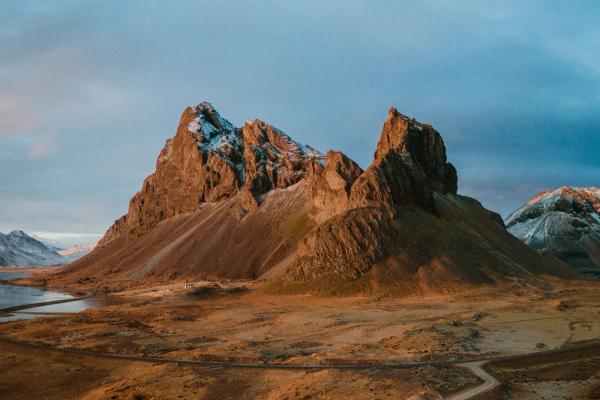
Vestrahorn
Quite close to Hvalnes, Vestrahorn is a spectacular peak by the sea. The area is known for its beautiful black sand beaches and tidal pools. You can also visit the Stokksnes promontory, which also has a lighthouse. There’s a cozy café nearby where you can have a break.
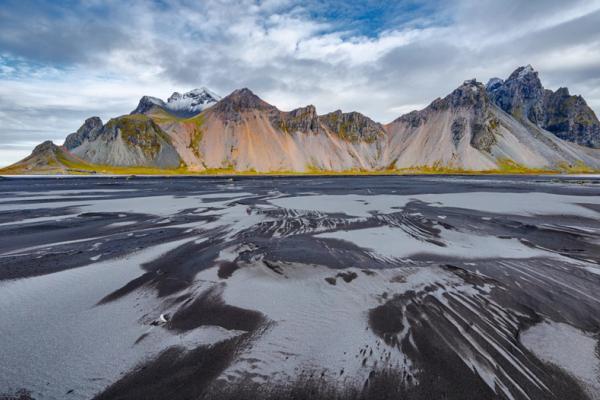
Jökulsárlón Glacier Lagoon
This natural attraction, one of the best in all of Iceland, is a bit farther away, but it deserves a mention here. Jökulsárlón Glacier Lagoon is 100 kilometers (62 miles) west of Hvalnes Nature Reserve and is a place that looks like something from another planet. This natural lagoon is famous for the pieces of ice floating in the water. These little icebergs have separated from a glacier and can be seen on the lake’s surface before drifting out into the ocean. There, some end up on the famous Diamond Beach, creating a beautiful contrast of the blue ice resting in the black sand.
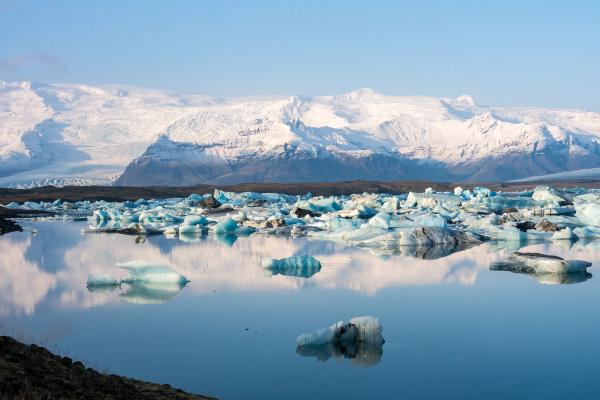
Travel Tips
- Prepare for the Weather: Pack layers, waterproof jacket and pants, and sturdy hiking boots. The weather here is unpredictable, and it’s better to be ready for all events.
- Leave No Trace: Stick to marked paths, don’t mess with wildlife, and take your trash with you. It’s everybody’s business that Hvalnes (and Iceland in general) stays clean.
- Supplies: Höfn and Djúpivogur are your nearest towns. There you can find gas stations, shops, bars, and restaurants.
- Book in advance: Many of the campsites we have listed here are pretty big and have plenty of space, but others not so much. Summer is the peak season, and some places may be full. If they don’t take bookings or you just want to go with the flow, arrive early to secure a spot.
- Photo opportunities: Hvalnes Nature Reserve has a great atmosphere for photos, so don’t forget your camera.
Conclusion
Hvalnes Nature Reserve is one of those places in Iceland that seem like a well-kept secret. Not many tourists choose this place in their itinerary through the country, but it’s a fantastic stop. That black rock beach, the lighthouse, the mountains and waves—it’s the kind of spot that makes you glad you decided to stop by with your campervan. There are a lot of great places to spend the night nearby, and it’s also close to other fantastic natural attractions.
